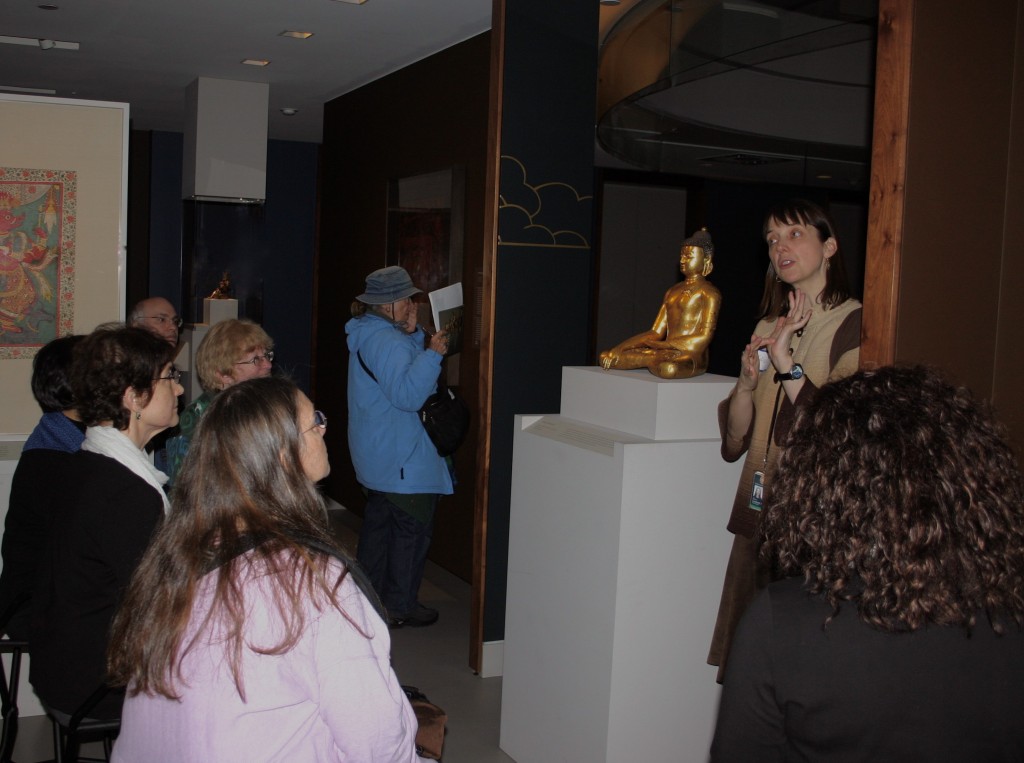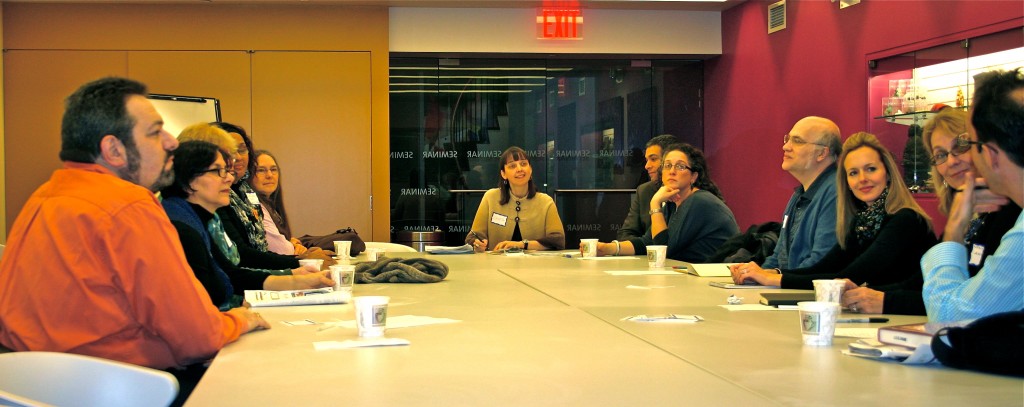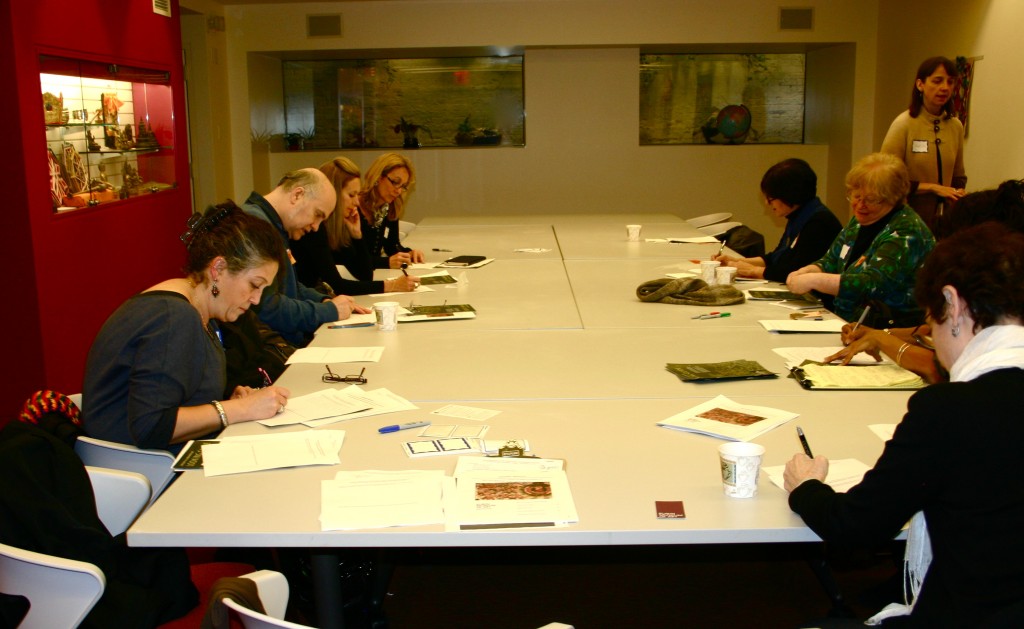A lovely group of Queensborough Community College faculty attended a Professional Development seminar at the museum last Friday. The faculty, representing a wide range of academic disciplines, including Geology, Computer Engineering, Biology, Physics, Speech and Theater Arts, Studio Art, Message Therapy, and ESL (English as a Second Language), came to the museum with two primary objectives: to see our collections–for many, this was their first visit–and to learn how to integrate our collections into courses they teach. After a round of upbeat introductions, we headed to the galleries. 
- Looking closely at Buddha Shakyamuni on our 3rd floor
First stop: the interactive map. From an educator’s point of view, our newly created interactive map is one of the most valuable teaching tools in the galleries. Not only does it ground a group in the geographic region of the Himalayas, it provides opportunities for multiple entry points of discussion, from the migration of ideas and goods along ancient trade routes to the importance of natural resources, such as rivers and water rights.
After a lively map discussion, one QCC faculty member suggested that we create an Educator’s Resource Guide dedicated solely to the topic of geography with multiple maps embedded in the guide coordinated with key works of art. This is a nifty idea, and one that could be utilized equally effectively by university faculty and K-12 educators. We’ll look into it…
When we moved to the 6th floor, Beth Citron’s newly opened exhibition, Modernist Art from India, wowed our QCC visitors. They were delighted by the beautiful range of works made by both men and women. These works sparked thoughtful conversations from the big picture perspective regarding the social and cultural upheavals of post-Idependence India, to the more personal issues of identity, gender, faith, and modes of creative expression embraced by individual artists. In particular, faculty were grateful to learn that the exhibition is the first of a three-part series that will extend over a year. This longer lead time will allow them to create a series of courses grounded in the images and ideas expressed by Beth’s poignant exhibition.
In closing, faculty reflected in writing how they envisioned creating curricular connections for their students. When shared collectively, these reflections revealed that they had discovered some exciting points of entry, from the geologist who was intrigued by the use of ground minerals to make traditional sacred paintings, to the theater specialist who is looking forward to having her students write and recite their own guided tours.
As so often happens, learning is a two-way street. The ideas shared by the QCC faculty allowed me to see our collections from fresh perspectives, for which I’m grateful. Thanks to the QCC faculty who participated and promoted our first PD seminar, including Margot Edlin, Kitty Bateman, as well as Patricia Lannes, and for making our together so productive, inspiring, and fun.





